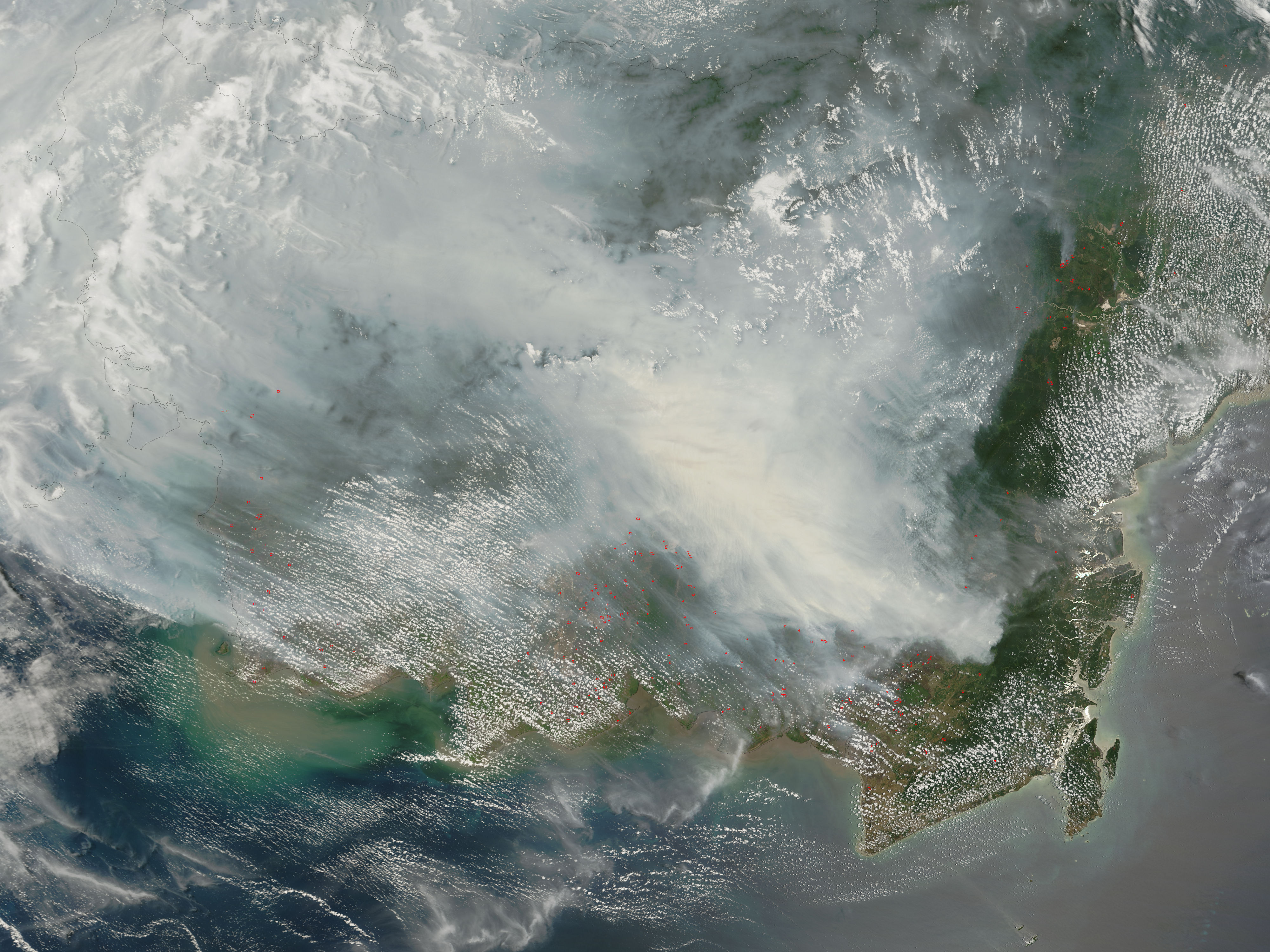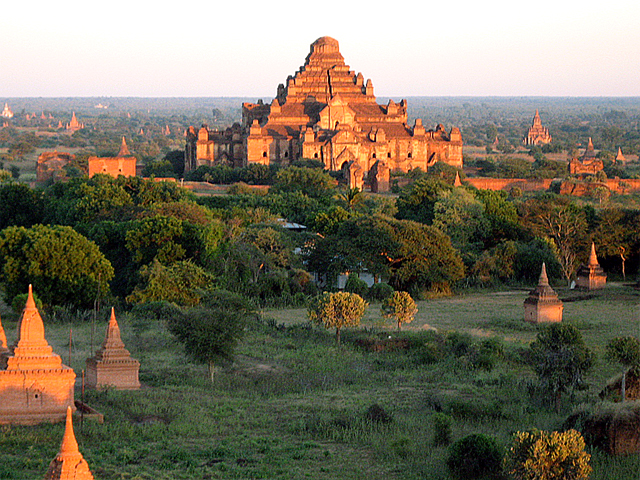 Mokhzani Mahathir - the second son of former Malaysian Prime Minister Dr Mahathir Mohamad - has staged a comeback since he quit the corporate scene six years ago. He appears more focused now, as seen in the Raffles Conversation in The Business Times of Singapore today.
Mokhzani Mahathir - the second son of former Malaysian Prime Minister Dr Mahathir Mohamad - has staged a comeback since he quit the corporate scene six years ago. He appears more focused now, as seen in the Raffles Conversation in The Business Times of Singapore today.
Back with a vengeance
Malaysian businessman Mokhzani Mahathir, written off after the 1998 Asian financial crisis, has made a spectacular comeback with the listing of his 46.7 per cent-owned firm Kencana Petroleum. S JAYASANKARAN reports
IN what has proved to be a well-timed return to the market, Malaysian businessman Mokhzani Mahathir floated his 46.7 per cent-owned firm Kencana Petroleum on the Kuala Lumpur stock exchange earlier this year, offering investors' shares at RM0.41 apiece. Given the boom in Malaysia's oil and gas industry, Kencana's shares soared and at current market valuations, Mr Mokhzani has emerged richer by at least RM236 million (S$102 million).
That's a triumphant comeback for a businessman who was all but written off after the 1998 Asian financial crisis. For Mr Mokhzani, however, his movement into oil and gas represents a back-to-roots event.
'By profession, I am a petroleum engineer anyway and I started my career with Shell,' he says. 'It was the first thing I did after I got back to Kuala Lumpur. It was also the first thing I did when I set out on my own.'
Then the businessman, the second son of former premier Mahathir Mohamad, got bitten by the Think-Big mentality that typified much of the Malaysian corporate sector in the 1990s.
In his words: 'Unfortunately, I got sidetracked and went into the other businesses which you know about and got into trouble. Tongkah, Pantai, I leveraged both the companies and me personally.'
In 2001, to stave off creditor banks and to blunt claims that his father's administration was practising nepotism (see sidebar), he had to sell the two companies, which had been involved in operations as diverse as healthcare and financial services.
'It was the same in both politics and business,' said Mr Mokhzani, who used to be assistant treasurer of the youth wing of the ruling United Malays National Organisation. 'I suppose the moral of the story is ... when you lose your way, go back to what you started from.
'We tried to settle all our debts but we couldn't. Nevertheless, the effort was made and it put us in good stead with some banks. Some of them wanted to maintain relationships with us, said they would be willing to help going forward. And the economy began turning and a few proposals had come to our table.'
One such proposal came from HL Engineering, a fabricator and petroleum services company. 'A lot of people make the mistake that it stands for Hong Leong,' says the businessman. 'But, no, it stands for Hin Loon after Chong Hin Loon, now the managing director of Kencana. We bought into it in late 2001 and we built it up and took it public this year.
The shares now trade at over RM2.50 apiece, which means the businessman is well and truly back. 'I have gone through the whole process of seeing shares fly and then crash,' he says, shrugging. Still, in Kencana's case at least, the shareholders have enjoyed seeing their shares going up.
A new shareholder is Quek Leng Chan, the tycoon behind the Hong Leong conglomerate, now reported to be among the top 10 shareholders. 'He is quite an aggressive investor,' says Mr Mokhzani. 'But I didn't know he was coming in. I only heard about it through a mutual friend, and I don't know what his strategy is.'
He intends to stick to Kencana. 'It is our main vehicle,' he says. 'We want it to be a brand name. I know there are others out there with the same name but they aren't related. For example, there is Kencana Property Management which recently bought Sungei Wang Plaza in Kuala Lumpur. We got calls over that but they are no relation.'
His point is that the company will stick to its core business. 'Kencana concentrates solely on oil and gas and nothing else,' he insists. 'And we intend to remain that way. It's not going to be an investment holding company like Tongkah and Pantai were. No more, this time we are going to be very focused and concentrate on just one thing at a time.'
He does have other interests but they are relatively insignificant. 'They are not under Kencana and they are small,' he says. 'I have the franchise for Porsche, an IT company in education software and some very small property development.'
Porsche? 'I've always loved high performance cars, which is why I am involved in motor-sports and the Sepang International Circuit ,' replies Mr Mokhzani, who is chairman of the F1 circuit in Malaysia. 'In 2001, someone approached me to take up the Porsche franchise and I thought, 'why not, it's a good brand'.'
How many cars does he sell? 'We sell around 130 a year which is nothing compared to the 300 or so that are sold annually in Singapore,' he says. 'It's just amazing, the number they sell there.'
He has bowed out of active politics. 'I used to be treasurer of Umno Youth but now I no longer have any political ambitions,' says Mr Mokhzani. 'My father used to say 'choose one or the other, business or politics'. So I choose business.'
Still, he thought at one time that his business benefited his politicking. 'At the beginning, it helped,' he recalls.
'My hospital group came in very handy because I could send doctors to the villages to give free treatment and medicine ... My manufacturing division gave people jobs. Once I left all of that, I lost the ability to do that.' Mr Mokhzani's younger brother Mukhriz, however, is still in active politics and is an elected member of the executive committee of Umno's youth wing.
Mr Mokhzani downplays his property ventures. 'We have invested in a small way,' he says. 'It's just that we occasionally take up 5 to 10 per cent in other development projects through a private company.'
But he waxes enthusiastic about oil and gas. 'Global oil prices are high and so there is a lot of new investment,' he says. 'The oil people are hungry for concessions. I think it will remain bullish and it will last for quite a while.
'When companies sign a production sharing contract in Malaysia, it is usually for around 25 years. The first five, to explore and find, then you develop for the next 20 years. Once you sign, you have to work, that's the way it is. And Malaysia has signed quite a few PSCs (production sharing contracts) so for us, the support services, there is plenty of work. For the next three to five years, it will be bullish.'
But he wants to take it slowly and to lead through alliances. 'We are the new boys on the block and our shareholders' funds are still small,' he says. 'I don't want to stretch our resources. It's better for us to team up with known players rather than going it alone.'
One recent venture was an alliance between the Singapore-based unit of Thailand's Mermaid Maritime to form a drilling services company. Separately, another joint venture between the two awarded Kencana a US$136 million contract to design, construct, equip and deliver a new-build tender rig.
Mr Mokhzani is enthusiastic about the alliance. 'It has done three things for us,' he says. 'We signed a contract to create our own drilling service where we have a 60 per cent interest. Two, we formed a company to own a vessel where we have 25 per cent. And, three, we won a contract to build a vessel for them at US$135 million. Building such a vessel has not been done in Malaysia, so we will be the first.'
He is bullish about the company's potential. 'We are going to grow 10-15 per cent a year, easy,' says Mr Mokhzani confidently. 'We think Mermaid will give us another order in six months, this time for a US$200 million vessel. Our order book right now stands at RM1.8 billion. When we listed, it was around RM800 million. So we are delivering.'
'We have expanded our yards significantly but still we have our hands full at the moment,' he continues. 'The Mermaid deal is a very big undertaking for us and we are bringing in technical experts. It will jump-start the business for us.'
On a separate note, the businessman, who is an F1 buff and chairman of the Sepang International Circuit, does not see a problem with Singapore's entry into motor-sport. 'Every year there are, what, 17 to 18 races throughout the world?' he says. 'When the season starts, we are the second race and they will be, maybe, the 13th. And the races are getting better in the sense that this year - with the Hamilton/Alonso thing - was really exciting.'
'I know Ong Beng Seng (the hotelier who helped bring F1 to Singapore) very well,' confides Mr Mokhzani. 'We had begun to talk about this two years ago and we have helped them. They've come here and we have shown them the workings of the track. To my mind, we are not really competing. Next year may be their first but it will be our 10th.'
He thinks it's been a great boon to the country. 'We have aggressively marketed it and by doing so we have promoted the country,' he says. 'Consumers are spoilt for choice - they have the English Premier League, they have rugby, all sorts of things. So we have had to hard-sell it to bring in the tourists, RM6-RM7 million a year in promotion. I believe Singapore is also looking at it from that point of view.'
Painful lessons from Asian crisis
MOKHZANI Mahathir surprised everyone when in April 2001 he declared that he was giving up his business interests in a bid to protect the family name in response to people who had accused his father's administration of nepotism. Mr Mokhzani's father is Malaysia's fourth prime minister Mahathir Mohamad, now 82, who stepped down on Oct 31, 2003.
Mr Mokhzani informed the stock exchange that he was selling his interests in two listed concerns - Pantai Holdings and Tongkah Holdings - which were then involved in healthcare, manufacturing, financial services and property development. He sold at a time of depressed stock market prices and couldn't have made much out of those transactions.
It was clear from his tone during that period that he was tired of repeated attacks from his father's political opponents that his corporate climb had been due to family ties. 'I am fed up with all these allegations,' he told a newspaper then. 'In this political climate, everything these companies do is construed as favouritism, and it's unfair to other shareholders.'
The onset of the Asian financial crisis deepened tensions between Dr Mahathir and his deputy Anwar Ibrahim, who was sacked in September, 1998, accused of 'moral misconduct'. Political temperatures soared and, in the process, the scrutiny over the business interests of Dr Mahathir's children intensified, hurting the premier's prestige.
Now Mr Mokhzani is back and enjoying favourable investor attention again through his company Kencana Petroleum which he took public late last year. But he's not about to forget those dark days. 'In 1999, the political temperature was quite hot,' says the businessman. 'And there was the economic crisis. And so for me, it was one step forward and several steps back.'
Is there anything he will carry over from the Asian crisis? Mr Mokhzani does not hesitate: 'With 20:20 hindsight, I guess I was far too diversified, I spread myself too thin and geared up too highly.'
The moral for the businessman is simple. 'Don't borrow too much,' he says. 'I geared up personally so I should know. You know, Pantai Holdings was a gem of a company, it had cash and it had a good, viable business with concessions. But we had to sell, you have to be able to survive so you step away and wait to come back another day.'
At the height of the crisis, Mr Mokhzani was reported to have racked up debts of close to RM200 million. He sold his interest in hospital specialist Pantai Holdings to Malaysian businessman Lim Tong Yong who controversially sold it to Singapore's Parkway Holdings last year. That caused a brouhaha as Pantai had two lucrative government concessions. In the end, state investment agency Khazanah Nasional stepped in and took up a majority interest in Pantai.
'I didn't have much of a surplus after I sold everything, not at all, just sort of enough to keep the bankers off my back,' continues Mr Mokhzani. 'But I did the right thing. Someone once told me never to be emotional about my companies. There should be no sentiment in business.'
He does not state the extent of his debt. 'Frankly, I'd rather not remember,' he says, wincing. 'It pushed me to take drastic action. We were getting letters from the banks with some threatening to take legal action against me. Not all though, one or two stood by us. Now, the bankers who stood by me are happier today than they were five years ago.'
Sophie's note: Wonder why Mokhzani has such short hair nowadays? He took a real haircut recently! :-)
 It's not exactly official but Singapore has trounced Malaysia in the competing claim for Pedra Branca/Pulau Batu Putih, according to an online poll by Sophie's World.
It's not exactly official but Singapore has trounced Malaysia in the competing claim for Pedra Branca/Pulau Batu Putih, according to an online poll by Sophie's World.



![[dead.jpg]](http://bp1.blogger.com/_-HUiwp7Jqnc/Rwahu7OaGSI/AAAAAAAAF48/ufaduvfaCYM/s1600/dead.jpg)






 Mokhzani Mahathir - the second son of former Malaysian Prime Minister Dr Mahathir Mohamad - has staged a comeback since he quit the corporate scene six years ago. He appears more focused now, as seen in the Raffles Conversation in The Business Times of Singapore today.
Mokhzani Mahathir - the second son of former Malaysian Prime Minister Dr Mahathir Mohamad - has staged a comeback since he quit the corporate scene six years ago. He appears more focused now, as seen in the Raffles Conversation in The Business Times of Singapore today.




